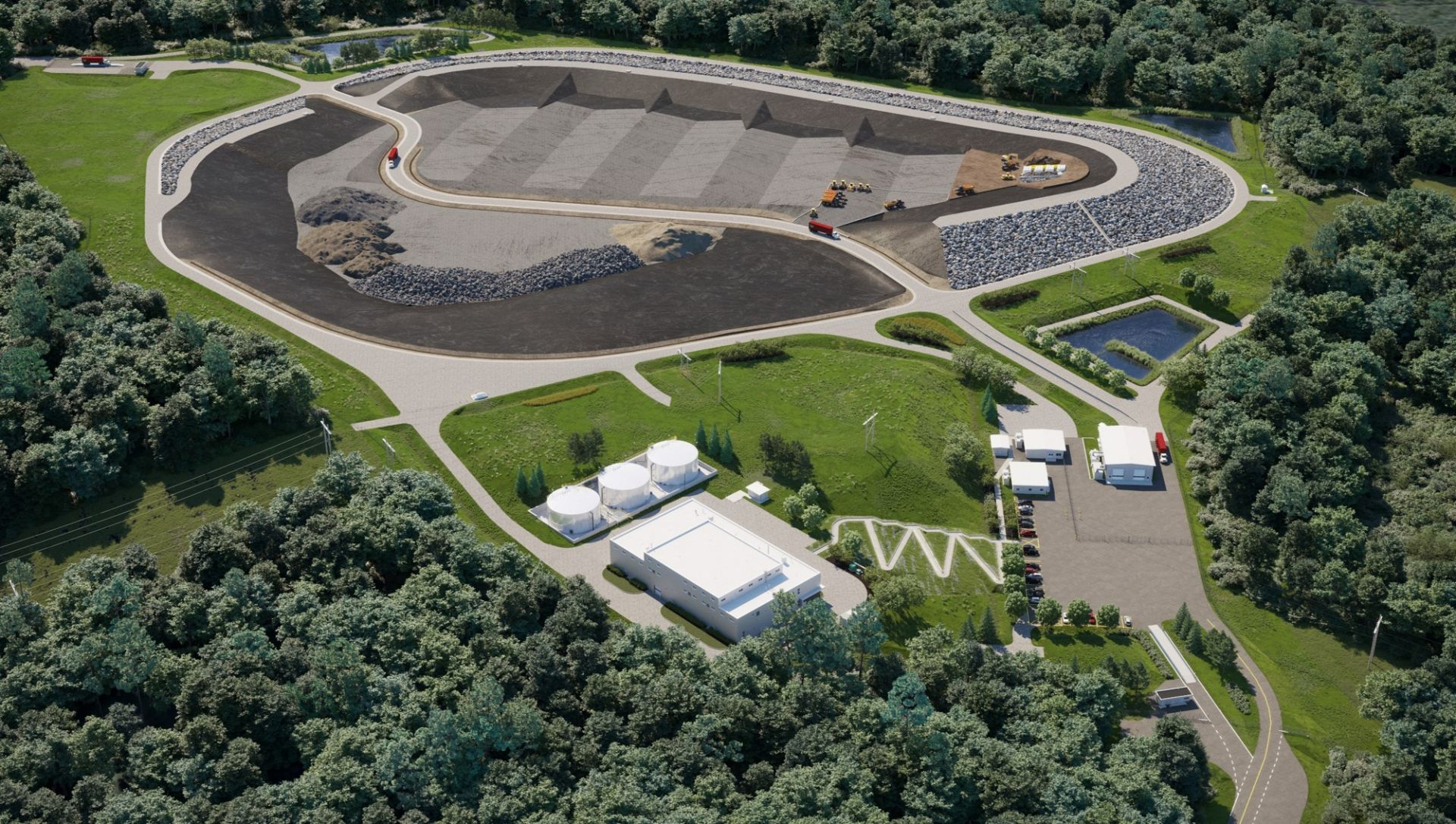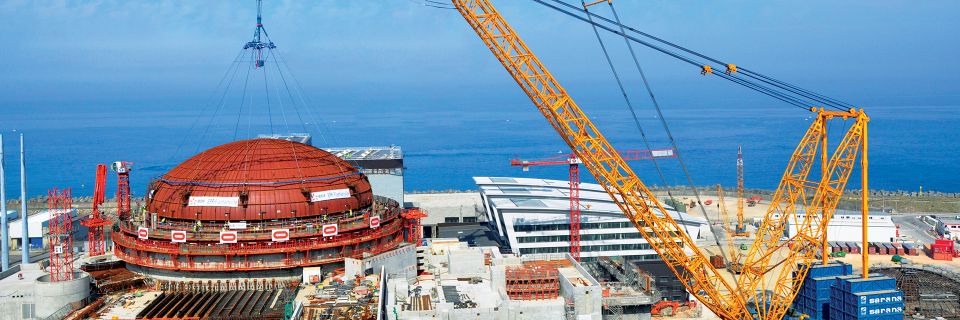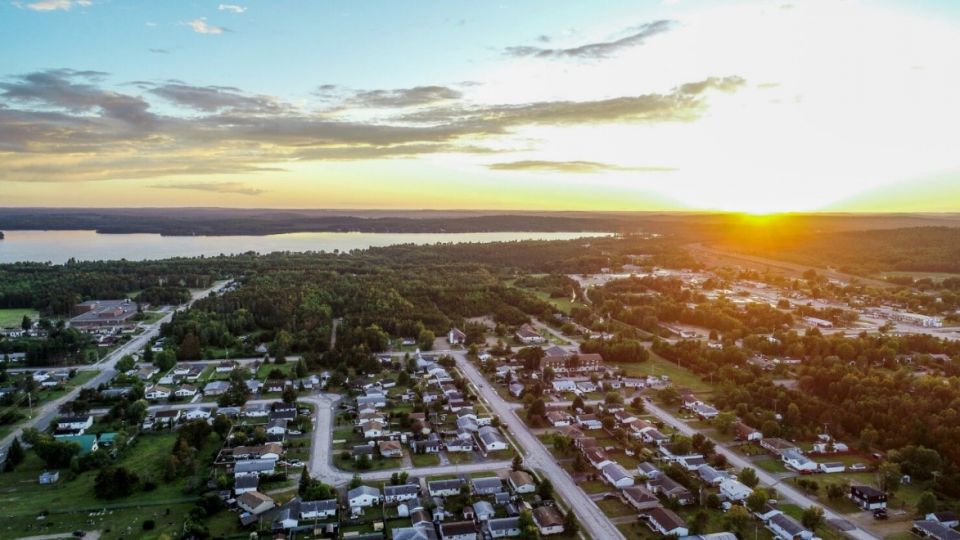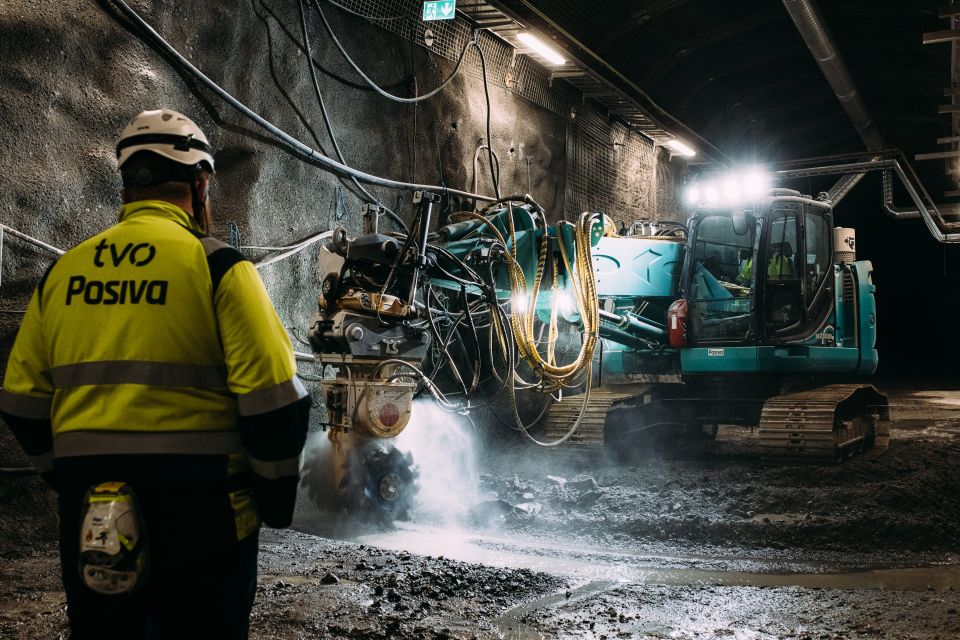Concept art of the Chalk River near surface disposal facility for LLW. (Image: CNL)
The Canadian Nuclear Safety Commission has decided to amend Canadian Nuclear Laboratories’ operating license for the Chalk River Laboratories, allowing the construction of a near surface disposal facility (NSDF) for low-level radioactive waste on the nuclear research site in Deep River, Ontario.
In 2017, CNL applied to the CNSC for a license amendment authorizing the construction of the NSDF. According CNL, the facility is needed for the clean-up of the Chalk River campus, which will allow for the decommissioning of aging and redundant nuclear facilities, the removal of contaminated soils, and the disposal of equipment contaminated with LLW.
In making its decision, announced on January 9, the CNSC said the commission concluded that the NSDF project is protective of human health and the environment, including the Ottawa River, and that the proposed site is an acceptable and safe location for the facility.
The facility: The NSDF is expected to provide for the permanent disposal of up to 1 million cubic meters of solid LLW, such as contaminated personal protective clothing and building materials. Most of the waste to be placed in the NSDF is currently in storage at the Chalk River site or will be generated from environmental remediation, decommissioning, and operational activities at the site, which has been in operation for 80 years. According to the CNSC, approximately 10 percent of the waste volume will come from other Atomic Energy of Canada Limited sites or from commercial sources such as Canadian hospitals and universities.
The design of the NSDF includes an engineered containment mound, a wastewater treatment plant, and other support facilities. The facility location is entirely within the Chalk River site boundaries, less than a mile from the Ottawa River, on a bedrock ridge that slopes away from the river.







